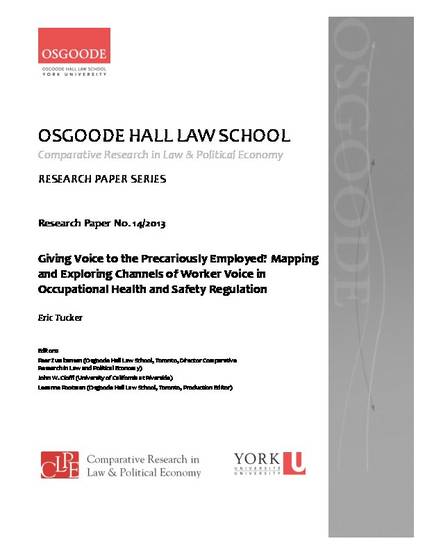
- labour law,
- occupational health and safety,
- precarious employment,
- Regulation
In most contemporary occupational health and safety (OHS) regimes, great emphasis is placed on amplifying worker voice in regulation through worker health and safety representation in the employers’ OHS management system. Historically, these regimes were designed on the assumption that the workers who would use these mechanisms were full-time workers having secure jobs with their current employers. This is manifestly no longer true, posing a serious challenge to the efficacy of these regimes. After setting out the historical context of worker voice in OHS regulation, this paper begins by mapping out eight channels of worker voice based on the combination of three variables: the subject of worker voice, the object of worker voice and the audience for worker voice. The aim of this exercise is not only to provide greater analytical clarity to discussions of worker voice in OHS regulation, but to also open up the discussion about alternative models of worker voice that might better fit the reality of today’s labour market. The paper examines the research on how well precariously employed workers are able to use existing channels of voice and concludes by considering strategies and tactics for amplifying their voice in OHS regulation.
Available at: http://works.bepress.com/ericm_tucker/20/
